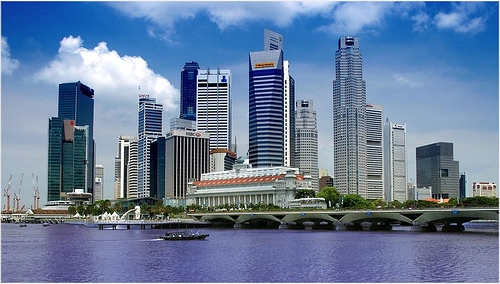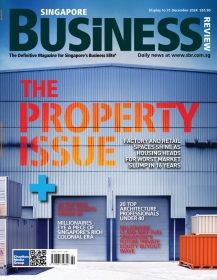
The 3 new property frontiers in Southeast Asia
Forget about the relatively more developed economies.
According to Pacific Star, more than a decade after the Asian Financial Crisis, investors are warming up gradually to the Southeast Asian region, targeting the relatively more developed economies of Singapore, Malaysia, Thailand and Indonesia.
Most investments in these markets (with the exception of Singapore), it said, fall towards the opportunistic end of the investment spectrum. While most have shied away from other emerging markets like Vietnam or the Philippines, some are starting to embrace new horizons as familiarity with the region deepens, it added.
Here's more from Pacific Star:
The recent emergence of Myanmar from its political and economic isolation has steered the international investor community towards the recognition of new growth markets in Southeast Asia. In this article, we take a closer look at the fringe economies of Myanmar, Vietnam and the Philippines. Our takeaway is that the interplay of strong fundamentals and recent growth catalysts point to a wealth of real estate investment opportunities that can complement Asian real estate portfolios.
There are two key fundamentals that attest to the favourable growth prospects for Myanmar, Vietnam and the Philippines. The first relates to the favourable profiles in these markets. Their combined population is 230 million presently and high fertility rates will push this figure to above 280 million by 2030. The average median age of 26 compares very favourably to that of other regions such as Europe (40), the United States (37) and China (35). This youthful population will provide a positive demographic dividend through 2030 and support economic growth.
In addition a young and growing population, these markets are also endowed with a wealth of natural resources whose potential has been hardly tapped. Rich natural gas deposits as well as gold, jade and gemstones can be found in Myanmar, while Vietnam possesses abundant oil and coal reserves. The Philippines is endowed with
copper, nickel, iron, silver and gold. A structured resource development program could unleash tremendous multiplier effects on other commercial activities. Recall how a mining boom brought prosperity to Australia and Brazil during the past few decades.
The proximity of Myanmar and Vietnam to China and India provides ready access to one-third of the world’s population. At the time of this writing, manufacturing activities are already relocating to Vietnam on the back of rapid wage increases in China. The strategic location of the Philippines also facilitates economic exchanges
between the East and West.
1. Myanmar
The economy of Myanmar has been dormant for decades but a recent flurry of reforms suggests that this might not remain so for long. The government has made large strides in changing the world’s perception of Myanmar as an authoritarian regime. The foremost opposition leader, Aung Sun Suu Kyi, was released after two
decades of house arrest and allowed to contest in elections. In April 2012, she won a seat in the parliament.
The introduction of economic reforms will help level the playing field and mitigate risks for foreign investors. For a start, the Myanmar kyat was placed on a floating rate of 820 kyat to US$1 in April, which will provide greater clarity for investments.
Previously, all foreign currency was converted at the rate of US$1 to 6.3 kyats while the informal market could fetch as much as 800 kyats. The proposed new foreign investment law also provides investors with a five-year tax holiday and fosters greater business transparency as it sets out land-use terms, legal structures and
incentives for foreign companies.
Plans for special economic zones are also underway. In the wake of these reforms, the international community has reacted positively. The European Union, United States, Canada and Australia have eased longstanding economic sanctions against Myanmar, and this is expected to draw in a flood of investments and boost trade volumes. Japan, Myanmar’s largest creditor, has waived its debt, while the Tokyo Stock Exchange and Daiwa Securities Group will assist Myanmar to set up its first stock exchange by 2015.
After the last aid program ended 25 years ago, the World Bank is now engaging the nation again by setting up an office in Myanmar. The International Monetary Fund is optimistic that growth of at least 6% can be achieved in the next few years.
2. Vietnam
Since 1990, Vietnam has achieved rapid growth above 7% per annum on average, the fastest in Asia after China. Some have dubbed it as a ‘mini China’ before macroeconomic issues surfaced in the past few years. Investors have balked at how state-owned enterprises – which account for about 40% of the country’s economic output – have exhausted much of the country’s capital but delivered poor returns. In 2010, the state-owned shipbuilding firm Vinashin was almost bankrupt and was eventually rescued by the government.
In hindsight, the unilateral emphasis on growth has saddled the country with high debt, persistent inflation and large trade imbalances. Despite the challenges in the past few years, the recent pick-up in the macroeconomic environment may rejuvenate Vietnam’s growth momentum. After hitting a peak of 23% in August 2011, inflation has eased to 7% in June, providing the country with greater scope to use monetary stimulus.
At the recent central committee meeting, the government has affirmed the shift of its economic focus from one centred on pure growth to a ‘three pillar’ reform program which involves the restructuring of public investment and state-owned enterprises as well as the consolidation of the banking sector.
While the path ahead is littered with challenges, supporting Vietnam as an attractive investment market are its youthful population and abundant natural resources. The country is currently the world’s second largest exporter of rice and coffee as well as the third largest producer of rubber and seafood. Should the government be successful in its reform programs, this will bring about muchneeded stability to the economy and renew investor confidence, paving the next wave of growth.
3. Philippines
Investors generally have written off the Philippines as the ‘sick man of Asia’ following two decades of oppression under former president Ferdinand Marcos. Since 1998, however, the archipelago of 7,000 islands has achieved a remarkable 13 straight years of growth. The return of Indonesia to investment grade status has cast a greater spotlight on the Philippines, which now appears closer to become the‘next Indonesia’.
Like Indonesia, the Philippines has achieved strong growth,lowered its debt and expanded its foreign reserves. At 40%, its debt-to-GDP ratio is amongst the lowest in Asia while foreign exchange reserves have more than tripled since 2005. Standard & Poor’s and Fitch Ratings have raised Philippines’s credit rating to a notch below investment grade. An investment rating upgrade will almost certainly lead to a catalytic surge in investments.
Another key positive is that the current president Benigno Aquino III is enjoying an unprecedented level of support from both chambers of the Congress after winning the 2010 elections by a record margin. His administration’s Private-Public Partnership (PPP) is projected to increase GDP by as much as 3.8% when fully implemented. The program, which involves the construction of more than 600 kilometres of roads and expressways, will boost connectivity and increase land value, spelling more opportunities for real estate investments.
























 Advertise
Advertise






